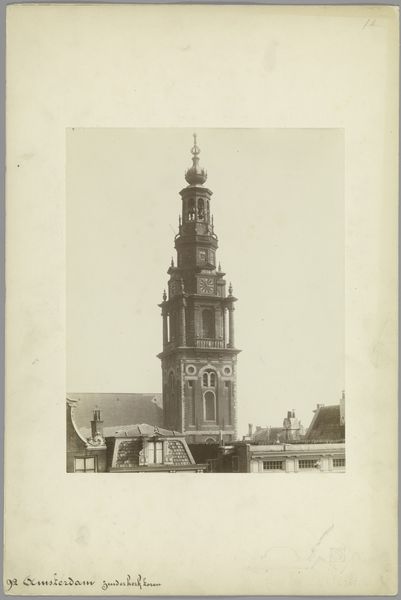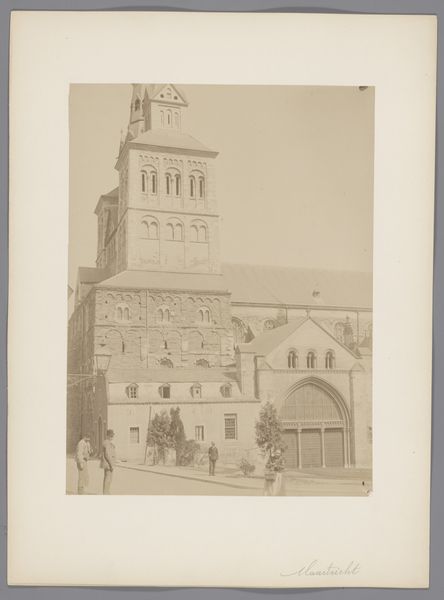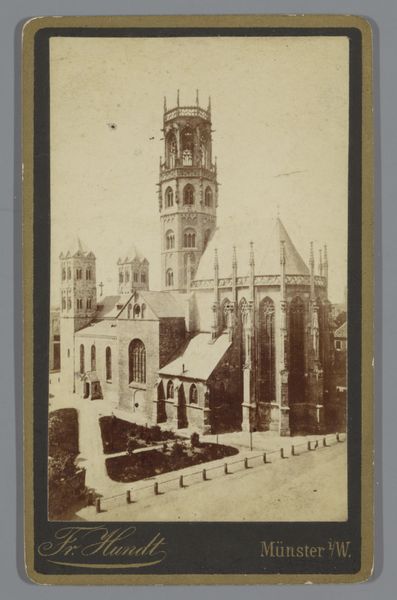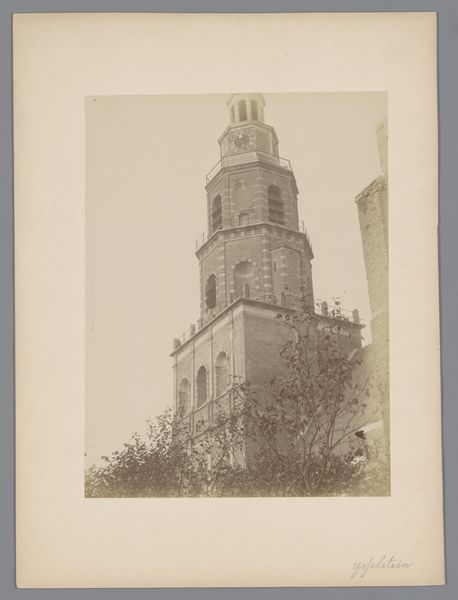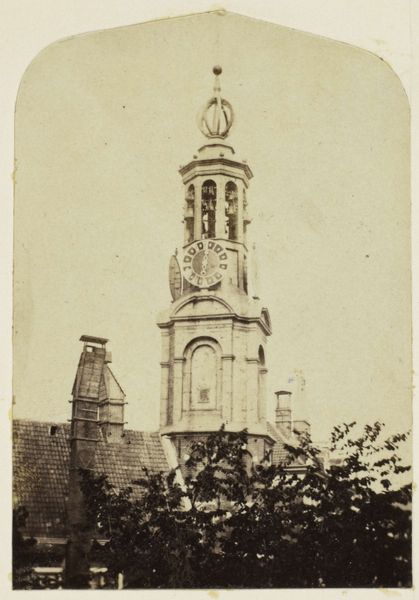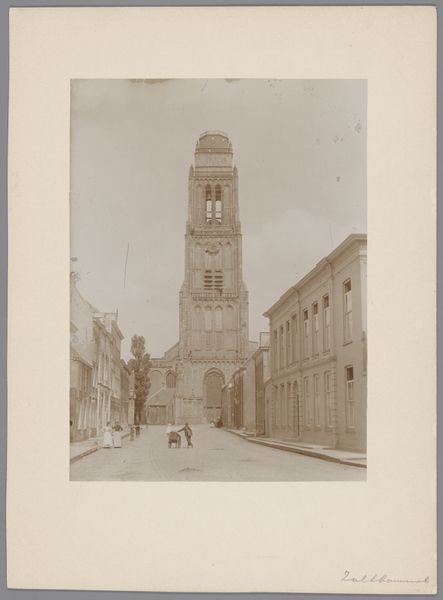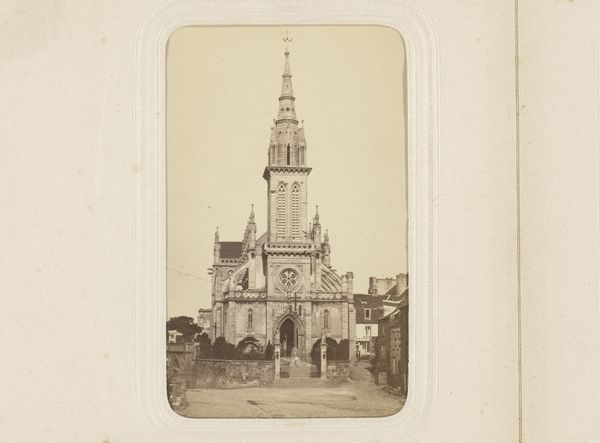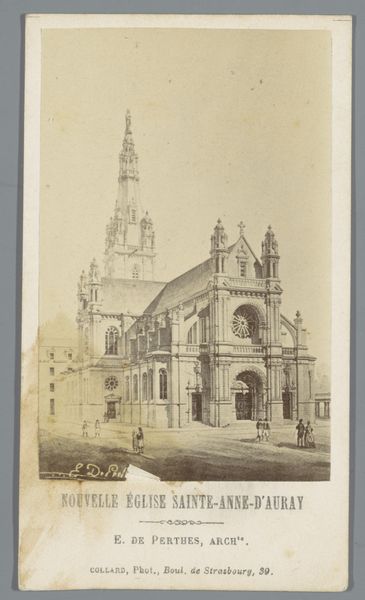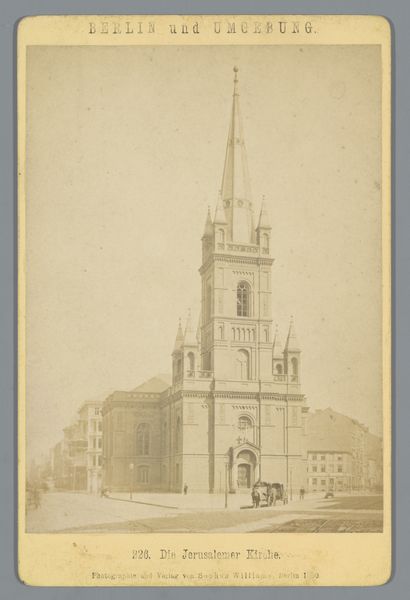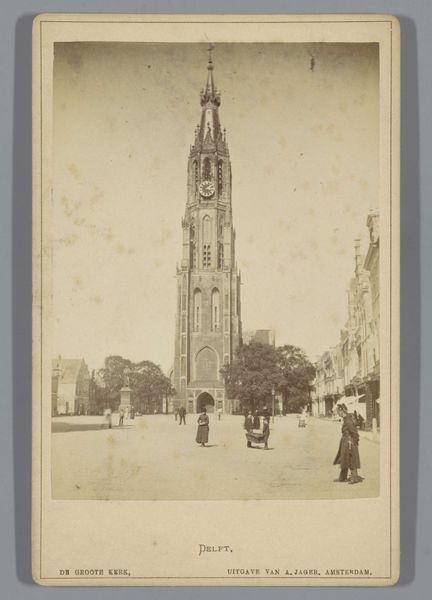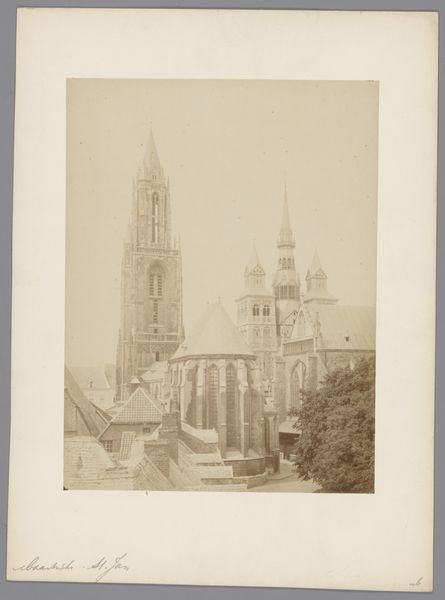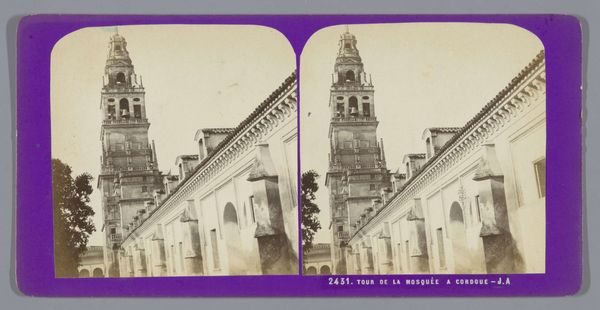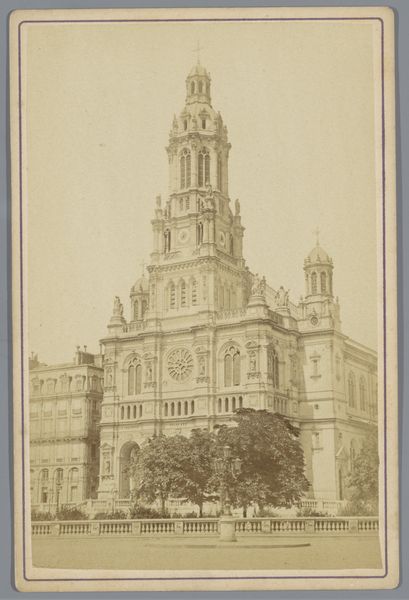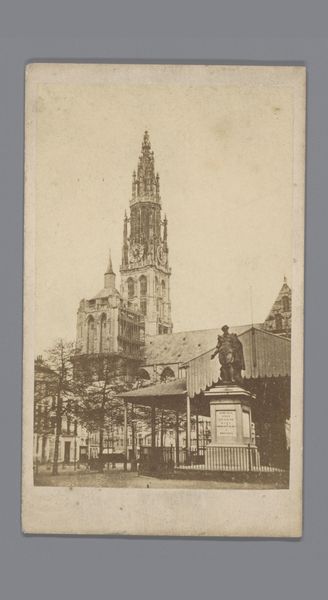
Gezicht op de klokkentoren van de Mezquita te Córdoba, met sinaasappelbomen op de voorgrond c. 1875 - 1900
0:00
0:00
juanlaurent
Rijksmuseum
photography, gelatin-silver-print
#
landscape
#
photography
#
orientalism
#
gelatin-silver-print
#
cityscape
#
realism
Dimensions: height 334 mm, width 240 mm
Copyright: Rijks Museum: Open Domain
Curator: I'm struck by the stillness captured in this photograph. It feels almost dreamlike, the light soft and diffused. Editor: This is a gelatin-silver print, likely taken between 1875 and 1900, offering "A view of the bell tower of the Mezquita in Córdoba, with orange trees in the foreground." It’s attributed to Juan Laurent. And it does evoke a powerful sense of place, and an undeniably Orientalist one. Curator: The Mezquita's bell tower immediately pulls the eye upward. What strikes me is the layering of architectural styles, the visible history embedded in its structure. It echoes the complex cultural narrative of Córdoba itself. The way the artist staged it with the trees feels deliberate, like framing something sacred. Editor: It's a picturesque view, yes. But considering its period, this imagery would have perpetuated a Western gaze upon the East, romanticizing a history often marked by colonialism and cultural appropriation. The orange trees themselves, while beautiful, become part of that visual language, exoticising the scene for a European audience. Curator: True, the orange tree has powerful symbolism—associated with paradise and fertility in both Christian and Islamic traditions. Could it represent the layering of civilizations there, with new life springing forth in an historically fertile region of intermingling belief systems? I’m also intrigued by the shadows, like veiled figures, subtly present but not overtly defined. It mirrors the Mezquita’s transformation itself over time. Editor: I appreciate that, I think we have to be cautious to contextualize this within a period steeped in imperial ambition. This photograph, viewed through today's lens, demands a critical awareness of how the "Orient" was consumed and, indeed, created for Western audiences. Consider, for example, the lack of human presence in the foreground, it amplifies the sense of staged exoticism of place devoid of people. Curator: That’s a really important consideration, the lack of human subjects here feels quite intentional, as if we’re not meant to think of it as a lived-in space but more a preserved image, reinforcing the perspective of an outside observer. It's certainly a complex interplay between visual appeal and potentially problematic cultural representation. Editor: Ultimately, reflecting on images like these necessitates looking critically at our present. Recognizing how these photographs influenced, and were influenced by, societal attitudes is how we break cycles. Curator: It underscores the importance of engaging with historical imagery—with awareness. Thank you!
Comments
No comments
Be the first to comment and join the conversation on the ultimate creative platform.
